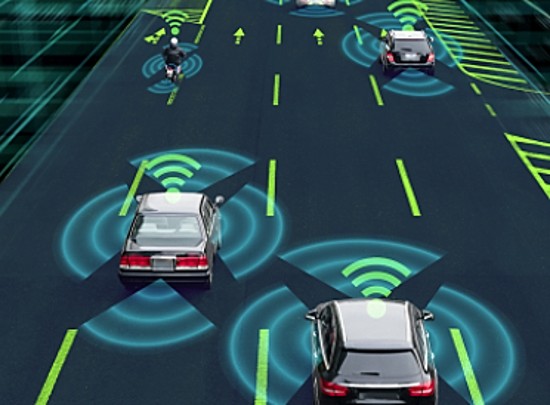Light detection and ranging technology, known by the acronym, LIDAR, uses light to help with navigation, mapping, surveying, and numerous other industrial applications. But where it is making its biggest impression is in the automotive industry. Where bats and dolphins use echolocation and sonar to navigate, LIDAR uses light in the form of pulsed lasers.
LIDAR wouldn’t exist without lasers. Initially developed for military applications, today LIDAR is used widely to measure and scan in numerous fields from agriculture to transportation.
Increasingly the focus on the use of LIDAR has been in the automotive field to provide vehicle assistance to drivers, and in the future to make vehicles driverless.
The Roadmap to Vehicle Autonomy
Autonomous vehicles are being pursued by all of the major automobile makers. No one has done more to promote the idea of autonomy than Tesla. But the company has been reluctant to adopt LIDAR on all its models. Only the Model Y features a limited LIDAR set. Elon Musk, the company’s CEO, has called LIDAR a crutch.
Yet LIDAR is the most likely tool to get Tesla and every other automobile manufacturer to the ultimate goal of a fully autonomous road experience. Tesla, instead, is relying on cameras, ultrasonic systems, radar and a raft of software and analytics to assist with navigation. This pursuit of autonomy without LIDAR is showing its weaknesses and delaying the company’s driverless vehicle goal. Too many crashes of Tesla models have been cited in the media.
The limitations of these other imaging technologies are well known. Cameras can take great moving pictures but provide poor depth perception. Cameras don’t like it when the Sun blinds them.
Ultrasonics are only good to do short-range detection.
Radar is better than ultrasonics for detecting what lies ahead but not as good as cameras in providing images. Radar sees what cameras do not see when the Sun gets in the way, or if there is fog or other inclement weather conditions that make visual navigation difficult. But radar images don’t provide detail.
LIDAR, however, delivers where these other imaging technologies fail.
LIDAR-assisted steering maps what lies ahead in three dimensions. It creates precision real-time visualizations of the surrounding environment. LIDAR can see objects in the immediate path and map what is happening on the road well ahead.
LIDAR technology implementation can be light or heavy. The three vehicles seen below show where and how LIDAR-equipped sensors can be implemented in light (L1), intermediate (L2) and heavy (L3) modes. The vehicle on the left can tell a human driver information to help he or she navigate the roads and obstacles ahead. The vehicle on the right, however, can make the human driver redundant.
LIDAR and ADAS
Will we see fully autonomous vehicles become predominant on streets and highways by the end of the decade? With the cost of the technology continuing to drop, and the explosion of sensors that integrate LIDAR, it certainly appears that is where we are heading.
ADAS is an acronym for Advanced Driver Assistance Systems. LIDAR sends out hundreds of thousands of laser pulses per second. lt uses navigational systems like GPS, and photodetectors to provide a real-time ongoing picture of what is in front, at the sides, and behind a vehicle. The information it continuously ADAS continuously receives allows it to make precise calculations and decisions as the vehicle is moving. Unlike radar and cameras, LIDAR has the ability to see what lies not just nearby but well ahead. That’s why automobile manufacturers see it as critical to ADAS evolving into fully autonomous vehicles.
It should be no surprise that in a recent Bloomberg survey, seventeen automobile manufacturers indicated they were heavily invested in LIDAR companies and systems for use in many current and future models. Even Tesla is coming around to the realization that LIDAR is an essential component to creating vehicles safe enough to drive themselves.

















[…] LIDAR is Rapidly Evolving to Make Autonomous Vehicles a Near Future Reality […]
[…] LIDAR is Rapidly Evolving to Make Autonomous Vehicles a Near Future Reality […]